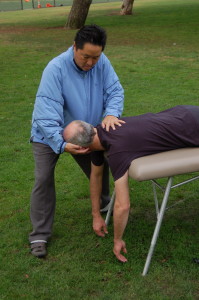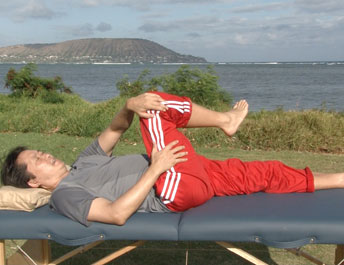 According to the Institute of Medicine, 116 million Americans are victims of chronic pain and most are not getting adequate treatment from their health care providers. Treatment for chronic pain is sorely misunderstood by the health care community. That is why individuals are being forced to look outside the conventional sources of health care to alleviate chronic pain conditions. Many people spend years searching for a solution.
According to the Institute of Medicine, 116 million Americans are victims of chronic pain and most are not getting adequate treatment from their health care providers. Treatment for chronic pain is sorely misunderstood by the health care community. That is why individuals are being forced to look outside the conventional sources of health care to alleviate chronic pain conditions. Many people spend years searching for a solution.
When it comes to physical pain treatment, or mobility health: it’s all about the muscles. Muscles and connective tissue affect the integrity of the skeletal frame. When muscles are shortened, a tensional imbalance is created around a joint and causes pain. By “repairing” the muscles, the pain is removed. This can be achieved by Active Isolated Stretching, a revolutionary stretching method for treating muscles in depth, something neither conventional stretching nor massage can do.
AIS Means Expert Assisted Stretching
When someone comes for an AIS treatment session, they must be prepared to work out of their pain issues. It is not a passive treatment in which the client lays down and checks out. The client and therapist work together to lengthen muscles. AIS involves stretching numerous muscles and many of those cannot be reached by self-stretching. That is why assisted stretching can be so important for the chronic pain patient : the AIS therapist helps the client open muscles that the client cannot reach individually.
What does it feel like?
The AIS experience involves lengthening numerous muscles to affect the problem area. One problem area can involve 18 to 30 different muscles that need to be opened up. When this process is complete, all the strains and stresses on the skeletal system are removed. After AIS treatment the body feels as if it is floating.
How long is the pain treatment session?
AIS treatment sessions takes longer than one hour. Opening up 18 to 30 muscles takes time. One session can last from two to four hours. It is not unusual for some sessions to last even longer than four hours. Clients will get faster results by doing longer treatment sessions rather than doing shorter ones on different days. The approach is to first lengthen the largest most exterior (superficial) muscles, then go deeper into the body and open smaller muscles that lay underneath. This thorough process of going from the outside muscles to the inner muscles is why AIS is different than conventional stretching and massage why it is so effective at resolving physical pain issues.
Where to Find Treatment
Anthony Ohm, is an expert practitioner of Active Isolated Stretching & Strengthening. He sees clients in Honolulu, Hawaii. The island of Oahu. You can learn how to do self-assisted Active Isolated Stretching by purchasing the videos on this site.
For pain treatment sessions in Honolulu, Hawaii call 808-737-3997
3359A Kanaina Avenue
(Waikiki-Kapahulu)
Honolulu, Hawaii 96815
Or you can request an appointment by e-mail :






I was in a motorcycle accident back 1998 in which I fractured my scapula. Four years later, I started having chronic frontal lobe headaches and still having them now. Neurologist put me on antidepressents. Ive tried diets, stress management, yoga, meditation, exercise, drugs.I usually give everything 3 months. Nothing works. Massage helps a little. This is the first Ihere about headaches in Carelation to the scapula. Something I have not tried. I’m 48 years old. Thank you
Hi I hust came across your web site and I believe stretching the muscles around the shoulders and neck is an important key in my pain. I have several herniated discs in my neck, I have been going for pain relief massages massages that helps somewhat but then the pain returns.Sometimes chiropractor cracks my neck. Is this safe?
Thanks!
Sandy
Hi Sandy Klein,
Completely stretching the muscles in your chest, shoulders, arms, upper back, and neck is part of the solution for repairing your neck. Massage can be helpful but kneading the muscles does not completely lengthen them. That’s why the pain returns because the target areas are not staying open.
Anthony Ohm